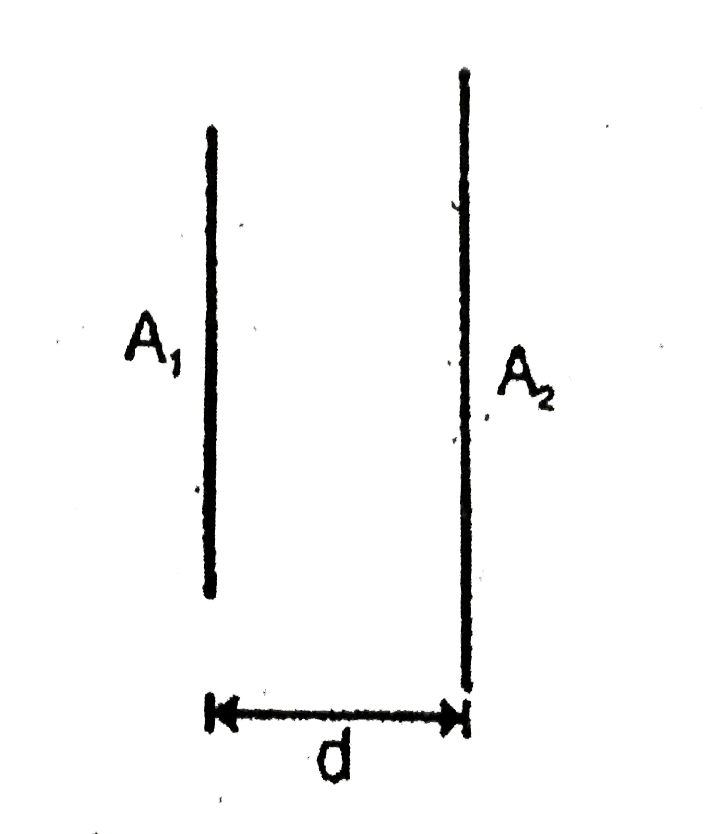The volume occupied by a thin- wall brass vessel and the volume of a solid brass sphere are the same and equal to 1,000cm3at0∘C. How much will the volume of the vessel and that of the sphere change upon heating to 20∘C? The coefficieny of linear expansion of brass is α=1.9×10−5.
To solve the problem of how much the volume of a thin-wall brass vessel and a solid brass sphere change upon heating from 0°C to 20°C, we will follow these steps:
Step 1: Identify the initial conditions
- The initial volume V0 of both the vessel and the sphere is given as 1000cm3 at 0°C.
- The initial temperature T0 is 0°C and the final temperature Tf is 20°C.
Step 2: Calculate the change in temperature
- The change in temperature ΔT can be calculated as:
ΔT=Tf−T0=20°C−0°C=20°C
Step 3: Understand the relationship between linear and volumetric expansion
- The coefficient of linear expansion α is given as 1.9×10−5°C−1.
- The coefficient of volume expansion γ is related to α by the formula:
γ=3α
Step 4: Calculate the coefficient of volume expansion
- Substitute the value of α into the equation for γ:
γ=3×1.9×10−5=5.7×10−5°C−1
Step 5: Use the formula for volume expansion
- The change in volume ΔV can be calculated using the formula:
ΔV=V0⋅γ⋅ΔT
- Substitute the known values:
ΔV=1000cm3⋅5.7×10−5°C−1⋅20°C
Step 6: Perform the calculation
- Calculate ΔV:
ΔV=1000⋅5.7×10−5⋅20=1000⋅1.14×10−3=1.14cm3
Step 7: Conclusion
- The change in volume for both the vessel and the sphere upon heating to 20°C is:
ΔV=1.14cm3
- The initial volume V0 of both the vessel and the sphere is given as 1000cm3 at 0°C.
- The initial temperature T0 is 0°C and the final temperature Tf is 20°C.
- The change in temperature ΔT can be calculated as:
ΔT=Tf−T0=20°C−0°C=20°C
- The coefficient of linear expansion α is given as 1.9×10−5°C−1.
- The coefficient of volume expansion γ is related to α by the formula:
γ=3α
- Substitute the value of α into the equation for γ:
γ=3×1.9×10−5=5.7×10−5°C−1
- The change in volume ΔV can be calculated using the formula:
ΔV=V0⋅γ⋅ΔT
- Substitute the known values:
ΔV=1000cm3⋅5.7×10−5°C−1⋅20°C
- Calculate ΔV:
ΔV=1000⋅5.7×10−5⋅20=1000⋅1.14×10−3=1.14cm3
- The change in volume for both the vessel and the sphere upon heating to 20°C is:
ΔV=1.14cm3
टॉपर्स ने हल किए ये सवाल
- CALORIMETRY AND THERMAL EXPANSIONBOOK - RESONANCE ENGLISHCHAPTER - CALORIMETRY AND THERMAL EXPANSIONEXERCISE - Board Level Exercise
19 Videos
- CALORIMETRY AND THERMAL EXPANSIONBOOK - RESONANCE ENGLISHCHAPTER - CALORIMETRY AND THERMAL EXPANSIONEXERCISE - Exercise-1
1 Video
- CALORIMETRY AND THERMAL EXPANSIONBOOK - RESONANCE ENGLISHCHAPTER - CALORIMETRY AND THERMAL EXPANSIONEXERCISE - Solved miscellaneous problems
1 Video
- CALORIMETRYBOOK - RESONANCE ENGLISHCHAPTER - CALORIMETRYEXERCISE - Exercise
19 Videos
- CAPACITORBOOK - RESONANCE ENGLISHCHAPTER - CAPACITOREXERCISE - Exercise
34 Videos
समान प्रश्न
What is the principle of calorimetry.
View SolutionIn the following equation calculate the value of H.
1kg syeam at 200∘C=H+1kg water at 100∘C(Ssystem= Constant=0.5cal/gm∘C)
View SolutionA bullte of mass 10gm in moving with speed 400m/s. Find its kinetic energy in calories?
View SolutionThe amount of heat required to change the state of 1 kg of substance at constant temperature is called
View SolutionThe capacitance of the capacitors of plate areas A1 and A2(A1<A2) at a distance d is

View SolutionThe height of a mercury column measured with a brass scale, which is correct and equal to H_0 at 0^@C , is H_1 at t^@C ? The coefficient of linear expansion of brass is alpha and the coefficient of linear expansion of brass is alpha and the corfficient of volume expansion of mercury is gamma . Relate H_0 and H_1 .
View SolutionAn iron sphere of radius 10cm is at temperature , 10∘C. If the sphere is heated upto temperature 110∘C , find the change in the volume of the sphere coefficient of linear expansion of iron = 11×10−6.∘C−1
View SolutionA thin brass sheet at 10∘C and a thin steel sheet at 20∘C have the same surface area. The common temperature at which both would have the same area is (Coefficient of linear expansion for brass and steel are respectively, 19×10−6/∘C are 11×10−6/∘C)
View SolutionThe volume occupied by a thin- wall brass vessel and the volume of a solid brass sphere are the same and equal to 1,000cm3at0∘C. How much will the volume of the vessel and that of the sphere change upon heating to 20∘C? The coefficieny of linear expansion of brass is α=1.9×10−5.
View SolutionAn iron sphere has a radius of 10 cm at a temperature of 0∘C. Calculate the change in the volume of the sphere, if it is heated to 100∘C. Coefficient of linear expansion of iron =11×10−6.∘C−1.
View Solutionपीतल का आयतन प्रसार गुणांक γ=5.7×10−5 प्रति ∘C है। इसका रेखीय प्रसार गुणांक ज्ञात कीजिए।
View Solutionपीतल की एक गेंद का आयतन 0∘C पर 50 cm3 तथा 100∘C पर 50.25 cm3 है | पीतल का रेखीय प्रसार गुणांक ज्ञात कीजिए।
View SolutionThe volume of thin brass vessel and the volume of a solid cube are both equal to 1 litre. What will be the change in the volumes of the vessel and the cube upon being heated to 25^(@) C ? (Given alpha for brass = 1.9 xx 10^(-5) ""^(@) C^(-1) )
View SolutionThe apparent coefficient of expansion of a liquid when heated in a brass vessel is X and when heated in a tin vessel is Y. If alpha is the coefficient of linear expansion for brass, the coefficient of linear expansion of tin is
View SolutionA barometer with a brass scale reads 75.34 cm at 25∘C. The scale was graduated at 20∘C. What will be the reading of the barometer at 0∘C? Coefficient of linear expansion α for brass =18×10−6∘C−1 and coefficient of linear expansion γ for mercury =18×10−5∘C−1.
View SolutionThe coefficient of apparent expansion of a liquid in a brass vessel is 14.6×10−5∘C−1. What will be the coefficient of apparent expansion of that liquid when it is in iron vessel? α for brass =18×10−6∘C−1 and α for iron =12×10−6∘C−1.
View Solution

